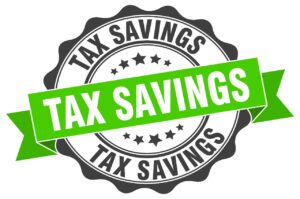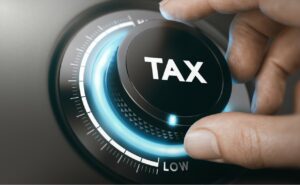To help you navigate your taxes this year, we will share important dates, updated tax brackets, and new income tax laws that you must know. Especially, if you work from home or are a homeowner. We’ll also go over some useful general tax information like how to file, who should file, and how to get the most out of your income tax return.
Deadline for filing your taxes
Make sure you don’t file your taxes late and incur penalties. Below are some important tax season dates to remember.
- As an individual, you will have until April 30th, 2025, to file your taxes
- For the self-employed, the deadline to submit your taxes is June 16th, 2025
For both employed and self-employed, the deadline to pay any money owed to the Canadian Revenue Agency for your 2024 taxes is April 30th, 2025.
Late penalties
Filing taxes late, in general, isn’t a good idea. If you’re one of the lucky ones who will get a refund, it will take longer for the funds to come through. Worse though is if you do owe taxes. Any filings done after the deadline when you owe taxes incur a 5% late fee immediately and then an additional 1% for each month afterward for up to a year. May not sound like much, but it adds up quickly. This is why, even if you owe taxes and can’t pay right away, it’s important to file before the deadline. You’ll still incur fees, but not nearly as much as if you don’t file on time.
What are the new tax brackets?
Tax brackets play a key role in how much tax you end up paying. Your income and the province/territory you live in determine your specific tax rate. The higher your income, the higher your tax bill.
In Canada, there are two tax brackets to be aware of, federal and provincial/territorial. They are adjusted each year. Below is a list of the new 2025 federal tax brackets.
- Income up to $57,375 has a tax rate of 15%.
- A 20.5% tax rate applies to the portion of taxable income between $57,375 and $114,750.
- The tax rate is 26% for the portion of taxable income, ranging from $114,750 to $177,882.
- A 29% tax is applied to the taxable income portion ranging from $177,882 to $253,414.
- A 33% tax rate applies to the part of your taxable income that exceeds $253,414.
If you would like to know more about tax brackets or find out the new tax brackets in your province, visit the Government of Canada website.
How do I file my taxes?
Filing taxes in Canada can be done in multiple ways. Which method is best often depends on cost, comfort level with doing taxes, the complexity of your taxes, and how fast you’d like your return.
Software
You can file your taxes online with a variety of certified software that has been approved by the CRA. There are even some that are pay-what-you-can. Some of the popular applications include:
- TurboTax
- H&R Block
- Wealthsimple Tax
- Studiotax
To make things really easy, many of them are downloadable to your computer, tablet, or phone.
Get a representative
Get someone who is highly experienced at filing their taxes. You can get a family or friend to help you out or a certified accountant.
Look into tax clinics
In almost every city and province in Canada, numerous free tax clinics can aid you in filing your taxes. There are certain restrictions, such as income level, that dictate who can make use of these clinics. If you would like to find a clinic near you, visit the Government of Canada website.
File your taxes on paper
Filing your taxes by hand is still a viable and preferred method for many people. Just download your T1 Income Tax Package to get started.
Income tax return documents
Below is a list of documents necessary for tax filing:
- T4 slips (Employment income)
- Employment insurance benefits (T4A or T4E)
- RRSP Contribution receipts
- Interest, dividends, mutual funds (T3, T5, T5008)
- Old Age Security and CPP benefits (T4A-OAS, T4AP)
- Notice of Assessment or reassessment from the previous year
- Other pensions and annuities (T4A)
- Social assistance payments (T5007)
- Receipts for tax deductions
- Workers’ compensation benefits (T5007)
- Any correspondence sent by the CRA
Understanding changes to income tax rules in 2025
Below are the tax changes the average Canadian can expect to see when it comes to taxes this year.
- As of last year, there are now two levels of CPP. The thresholds for both levels have increased. Primary CPP is now $71,300, with a max of $4, 034 in contributions. The secondary CPP2, threshold is now $81,200 with a max amount of $396.
- New criteria were set in place for short-term rental operators. Unless these criteria are met rental expenses cannot be claimed against income tax.
- If you earn money by taking on work from digital platforms like Lyft and Skip the Dishes, you’ll want to pay extra attention to your tax filing this year. The CRA is cracking down on those not reporting all their income and now requires gig platforms to report the total earnings made for each user.
- The Home Buyer’s Plan withdrawal limits have been increased from $35,000 to $60,000.
- Depending on your income the Basic Personal Income levels are now between $14,538 and $16,129.
How do I increase my tax returns?
As Canadians were are fortunate to have many tax credits and deductions we can use to reduce our tax burden. What’s the difference? While deductions reduce our taxable income, tax credits lower the amount of taxes owed. Linked below are some of the tax credits and deductions available. Check out the Government of Canada website for the full list.
Tax Credits
- Canada Child Benefit
- Canada training credit
- GST/HST Credit
- Canada Dental Benefit
- Children’s special allowances
- One-time top-up to the Canada Housing Benefit
- Canada workers benefit
- Provincial and Territorial benefits
- Disability Tax Credit
- Climate action incentive payment
- Child disability benefit
- Canada caregiver credit
- Home accessibility tax credit
Tax deductions
- RRSP Deduction
- Child Care Expenses
- Canada Workers Benefit
- Pension Adjustment
- Home Buyers’ Amount
- Moving Expenses
- Disability Tax Credit
Here are 5 tips that will help you increase your tax returns:
Save your medical receipts
The CRA allows you to claim medical expenses. These expenses include dental care, prescription medications, and even private insurance premiums. All you will need to do is keep all the receipts.
Contribute to your RRSP
By contributing to your RRSP, you can reduce your tax bill and potentially receive a bigger tax return. You can contribute up to 18% of your earned income, including any unused amounts from previous years. You can verify your RRSP contribution limit by logging into your CRA My Account.
Donate to charity
Donating to a charity not only does good in the world but also your bank account. Many charity donations are tax deductible. Keep in mind that there are certain criteria that must be met in order to be deducted.
Claim childcare
If you have a child who is under 16 years old, you may be able to claim some expenses. You can claim a deduction for things such as daycare centers, summer camps, nannies or babysitters, and even overnight boarding schools.
Income splitting
If you’re married or in a common-law relationship it’s worth taking a little time to explore income splitting. Income splitting is when the person with the higher income transfers some of their income to the lower-income individual. When done properly, and legally, there can be some significant tax savings.
What to do if you can’t pay?
If even after taking advantage of all the deductions and credits you’re eligible for you still can’t pay off your tax bill it’s okay. Don’t panic, there are ways to get help. The CRA itself has various options for those unable to pay. The easiest and most convenient is setting up a payment plan. There’s even a way to do it yourself online. If that isn’t enough call them and they’ll walk through other options with you. The important thing is to file on time and put a plan into action as soon as possible. Fees add up and options get fewer the longer you wait.
Consequences
Not paying your taxes can lead to a number of consequences. The most common are the fees and penalties mentioned earlier. They can get way more serious. The Government of Canada can:
- Seize or put a lien on your assets, such as your home
- Garnish your bank accounts or wages
- Revoke government benefits like GST/HST credits
Serious cases can even lead to imprisonment.
Final thoughts on tax returns
Although tax season can be stressful, having the right knowledge about the new tax laws and brackets can help you increase your tax refund.
Struggling with debt? Get hit with an unexpectedly high tax bill? Contact our experts. They can go over the variety of debt solutions available and help you decide which one is right for you.





